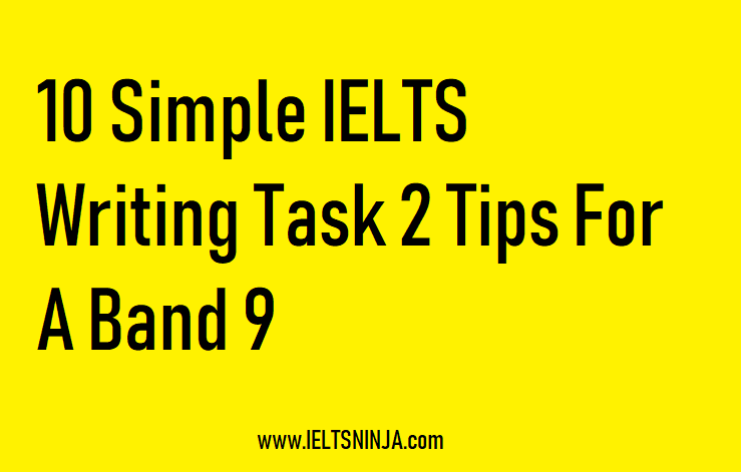Writing task 2 is popular as one of the toughest sections in IELTS academic. This reputation is because you have to write 250 words in less than 40 minutes as an answer. You can randomly get a question from any of the 5 categories of questions. That is why having a single formula doesn’t help in this case.
The general and academic sections for this particular task differ only in their level of difficulty. The word count, the idea behind the test and the scoring pattern remains the same.
Essay Writing Example Questions
And in order to explain how both the patterns work we have given examples for each of them.. Here are some examples:
GT Essay writing
- What are the advantages and disadvantages of promoting tourism in a country?
Academic essay writing
- Space exploration is a waste of money. To what extent do you agree?
The above examples elucidate the difference between general and academic sections. Please note that it is possible for the general test question to be in the academic section.
Tips to scoring a high band
If you want to score a high band in the listening section then you need to practice and make use of below listed tips. We have underlined the top 10 mistakes which students usually make and created alternate solutions that you can use to rectify such mistakes in the exam.
1. Understanding how the scoring is done in this subjective task
In the writing tasks, the examiner isn’t looking at how good or noble your thoughts are. He will score on the following parameters
-
- Task Achievement (25%) – This is linked to your word count, presenting accurate information and an overview of the topic.
- Coherence and Cohesion (25%) – This is linked to the flow of your thoughts. The way you organize paragraphs and the way you link them.
- Lexical Resource (25%) –Here the marking is basis your use of words, the errors you make and the appropriateness of the language you use.
- Grammar range and accuracy –Your knowledge of tenses, sentence construction and accuracy will all be under the scanner here.
2. How to use the 40 minutes given to complete the task
Since writing task 2 carries twice as many points as writing task 1, it makes sense to allocate twice as much time. We suggest dedicating 40 minutes to this task. Here’s how you can divide your 40 minutes
- Reading – Give 2 minutes to reading the question well. Understand the category of question being asked. You have to completely understand what is being asked of you. Whether to agree, disagree, give your opinion or discuss from a neutral standpoint. Once you have understood the question well, make a flow.
- Planning – Plan the flow of the essay in one of the many structures that you can find. Finding an appropriate place in your article for the main idea with a supporting example or for discussing advantages and disadvantages with examples. Making a miniature flow chart before you begin can become a point of reference for you when you feel lost. Dedicate 5 minutes to this task because it will help you streamline your thoughts before you start.
- Writing and revising– Once you put pen to paper, clear your mind of clutter and keep referring to the flow you have created in the rough. Make sure you leave time for a quick revision of what you have written. Both the activities combined should take you less than 25 minutes. Practice with a stopwatch to keep track.
3. Understanding the type of essay
There are 5 categories from which you can expect a question
-
- Opinion based- Agree or disagree
- Advantages and disadvantages
- Discussion of both views
- Two – part questions
- Solution to a problem statement
Knowing the kind of question helps you make a sound strategy before answering.
Sample Pattern To Follow:
A simple general pattern that you could follow is this one:
- Introduction
- Main idea with examples
- Summary of your main idea
- Conclusion
This will differ according to the question you get. When you are practicing, make different flows for each type and analyse what best answers the question.
4. Structuring the paragraphs>
Breaking the essay into the right sized paragraphs can be tricky. But here’s a formula that should make it easy. Each paragraph should not be more than 4 sentences and each sentence shouldn’t be more than 20 words. It can be very easy to keep on going without maintaining brevity of the essay. The examiner doesn’t have time to read more than 250-300 words. Take care to maintain connectivity through the essay.
Practice breaking down the idea into the right sized paragraphs visually, since you won’t have the time count words.
5. Content of paragraphs
The PEE method that will help you write content easily within a paragraph
- The PEE Method – Make a Point; Explain the point; Give Examples to support your explanation. Following this formula will ensure that there is a logical flow to all your paragraphs making it easier for the examiner to mark your paper. The idea is to be predictable while answering and maintaining cohesion throughout the essay. Creating a seamless flow is as essential as the words you choose while writing.
6. Sample opening lines
Below we try to list the different ways to open an essay or start an argument.
- You could simply write the question in your own words while taking a stand on it
- In my opinion/point of view
- I think that
- I believe that
- I understand that
- From my perspective
- From my understanding of the situation
- I agree
- I disagree
- I strongly agree
- I strongly disagree
- It appears that
- It may seem that
7. Sample closing line
Closing strongly and in a way that summarises your whole essay is essential. Here is some vocabulary you can use to do the same.
- In conclusion
- I would like to conclude by saying
- I would like to close this argument by
- Finally
- To summarise
- Overall
- To sum up
- I would personally conclude by saying
- In my opinion
8. Tips for building a strong vocabulary
A strong vocabulary is your best armour in the IELTS. It won’t just help you write better, it will improve your understanding of the language which is what needs to show in the examination. Here’s how you can build a solid vocabulary-
-
- When you are reading a book or magazine and come across a new word, try to guess the meaning before looking it up in a dictionary. Getting used to the context it is used in rather than the word itself will help you build confidence even when you don’t know words.
- Use the words you learn as often as you can to make them a part of your vocabulary.
- Try using thesaurus when writing to find synonyms when you find yourself using one word too often.
- Try playing word games and crosswords everyday to make the process of learning enjoyable.
9. How to tackle some common mistakes
Below are some common mistakes that can be tackled with by just being aware of them
-
- Not understanding the question well
- Not adhering to the word count
- Using bad handwriting and wrong spellings
- Not planning the time well
- Starting without a plan or flow for reference
- Starting with the main argument without an introduction
- Repeating the same thing using different words
- Not having clarity of thoughts
- Using the same word repeatedly
- Not writing a conclusion or closing line
10. How can online coaching help you
Writing is a subjective task. There is no way that you can score yourself correctly or honestly. One of the best solutions available today is to find an online coach who will do it for you. With online coaching you get access to a personal mentor who will focus on your progress solely. Helping you evaluate your strengths and weaknesses will only help you get closer to your dream band.








